When using both pipes and the map() function from purrr, I am confused about how data and variables are passed along. For instance, this code works as I expect:
library(tidyverse)
cars %>%
select_if(is.numeric) %>%
map(~hist(.))
Yet, when I try something similar using ggplot, it behaves in a strange way.
cars %>%
select_if(is.numeric) %>%
map(~ggplot(cars, aes(.)) + geom_histogram())
I'm guessing this is because the "." in this case is passing a vector to aes(), which is expecting a column name. Either way, I wish I could pass each numeric column to a ggplot function using pipes and map(). Thanks in advance!

